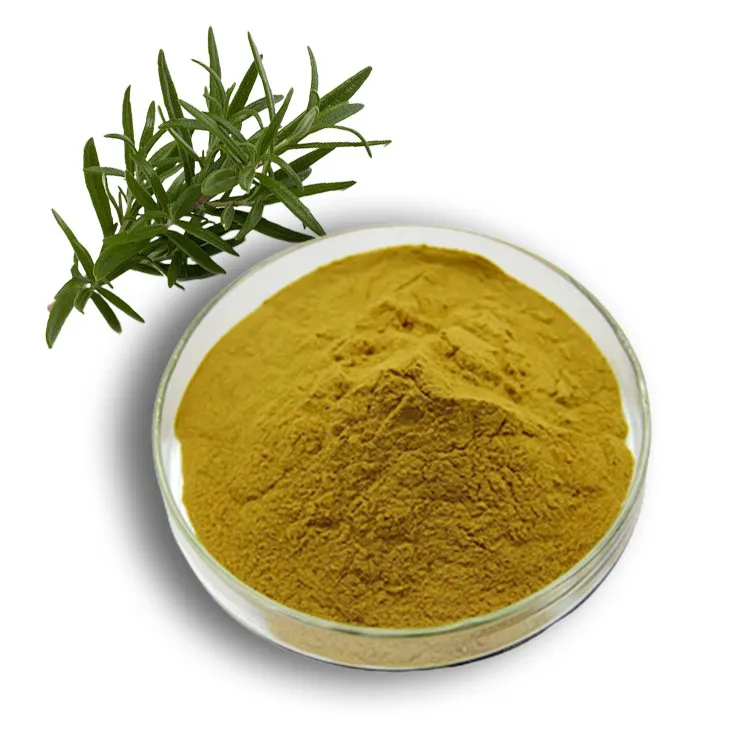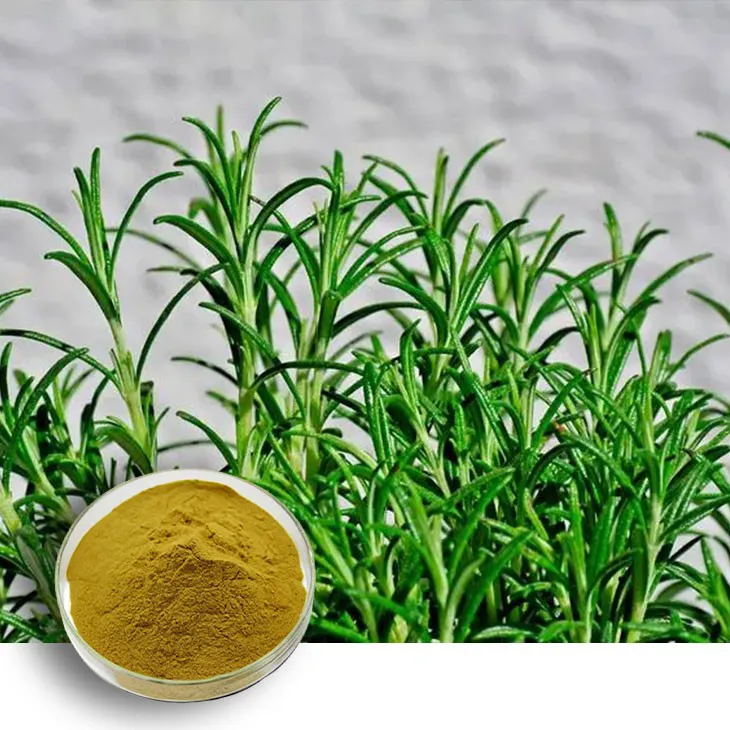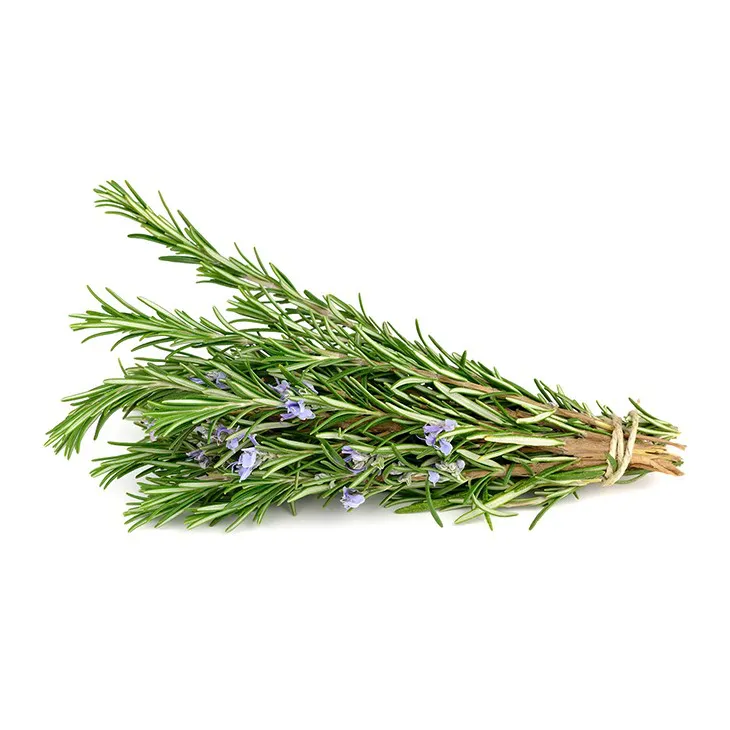- 0086-571-85302990
- sales@greenskybio.com
The Best Rosemary Extract in 2024.
2024-11-30

1. Introduction
Rosemary extract has been gaining significant attention in recent years due to its numerous potential benefits. As we enter 2024, the search for the best Rosemary extract becomes even more crucial. This natural substance is derived from the rosemary plant (Rosmarinus officinalis) and has a long history of use in traditional medicine, cooking, and various other applications.

2. Extraction Techniques
2.1 Traditional Extraction Methods
Steam Distillation: This is one of the oldest and most common traditional methods for extracting rosemary essential oil, which is an important component of Rosemary extract. In steam distillation, steam is passed through the rosemary plant material. The heat causes the volatile compounds in the rosemary to vaporize. These vapors are then condensed back into a liquid, which contains the essential oil. However, this method may not be as efficient in extracting all the beneficial compounds as some modern techniques.
Solvent Extraction: Solvent extraction involves using a solvent, such as ethanol or hexane, to dissolve the active compounds from the rosemary. The plant material is soaked in the solvent, and after a period of time, the solvent with the dissolved compounds is separated from the plant residue. The solvent is then evaporated to obtain the extract. While this method can extract a wide range of compounds, there is a concern about solvent residues in the final product if not properly removed.
2.2 Modern Extraction Techniques
Supercritical Fluid Extraction (SFE): SFE is a relatively new and advanced extraction method. It uses supercritical carbon dioxide as the extraction solvent. Carbon dioxide under supercritical conditions has properties similar to both a gas and a liquid, allowing it to efficiently extract a variety of compounds from rosemary. One of the major advantages of SFE is that it is a "green" extraction method, as carbon dioxide is non - toxic, non - flammable, and leaves no harmful residues. It can also be precisely controlled to target specific compounds, resulting in a more pure and high - quality extract.
Ultrasonic - Assisted Extraction: This method utilizes ultrasonic waves to enhance the extraction process. The ultrasonic waves create cavitation bubbles in the extraction solvent, which helps to break down the cell walls of the rosemary plant material, releasing the active compounds more effectively. Ultrasonic - assisted extraction can reduce the extraction time and increase the yield of the extract compared to traditional methods.

3. Chemical Composition and Its Relation to Effectiveness
Rosemary extract contains a complex mixture of compounds, which contribute to its various properties. Some of the key components include:
- Rosmarinic Acid: This is one of the most abundant and well - studied compounds in rosemary extract. It has antioxidant, anti - inflammatory, and antimicrobial properties. Rosmarinic acid helps to protect cells from oxidative damage by scavenging free radicals, and it can also modulate the body's inflammatory response, making it potentially useful in treating various inflammatory conditions.
- Carnosic Acid and Carnosol: These diterpenes are also major components of rosemary extract. They have strong antioxidant and anticancer properties. Carnosic acid can inhibit the growth of cancer cells in vitro and in some animal models, and carnosol has been shown to have anti - mutagenic effects, which may help prevent the development of cancer.
- Essential Oils: The essential oils in rosemary extract, such as cineole, camphor, and borneol, contribute to its characteristic aroma and have antimicrobial and expectorant properties. They can be used in aromatherapy to relieve respiratory congestion and improve mood.
The effectiveness of rosemary extract in different applications depends on the concentration and combination of these compounds. For example, in food preservation, the antioxidant properties of rosemary extract, mainly due to rosmarinic acid and other phenolic compounds, help to prevent the oxidation of fats and oils, thereby extending the shelf life of food products. In the pharmaceutical and nutraceutical fields, the anti - inflammatory and antioxidant properties of the various compounds make rosemary extract a potential candidate for treating or preventing various diseases.

4. Applications of Rosemary Extract
4.1 Food Preservation
Rosemary extract is increasingly being used as a natural alternative to synthetic preservatives in the food industry. Its antioxidant properties help to prevent the rancidity of fats and oils in food products. For example, in the production of meat products, rosemary extract can inhibit lipid oxidation, which not only extends the shelf life but also maintains the quality and flavor of the meat. In baked goods, it can also prevent the oxidation of fats, keeping the products fresh for a longer time.
When using rosemary extract for food preservation, it is important to consider the appropriate dosage. Too little may not provide sufficient protection, while too much may affect the taste of the food. The optimal dosage depends on the type of food product, the processing conditions, and the desired shelf life.
4.2 Natural Flavor Enhancer
The essential oils in rosemary extract give it a unique and pleasant aroma, which can be used to enhance the flavor of food. It can be added to a variety of dishes, such as roasted meats, soups, and stews. In addition to its flavor - enhancing properties, rosemary extract can also add a touch of freshness and complexity to the overall taste of the food.
However, when using rosemary extract as a flavor enhancer, it is necessary to ensure that it does not overpower the other flavors in the dish. A small amount is usually sufficient to achieve the desired effect. Different forms of rosemary extract, such as dried rosemary powder, essential oil, or liquid extract, can be used depending on the specific requirements of the recipe.
4.3 Pharmaceutical and Nutraceutical Fields
In the pharmaceutical field, rosemary extract has shown potential in treating various diseases. Its anti - inflammatory properties may be beneficial for conditions such as arthritis, where reducing inflammation can relieve pain and improve joint function. The antioxidant properties of rosemary extract can also protect the body's cells from oxidative stress, which is associated with many chronic diseases, including heart disease, diabetes, and neurodegenerative diseases.
In the nutraceutical field, rosemary extract is often used as a dietary supplement. It can be formulated into capsules, tablets, or added to functional foods. Consumers are increasingly interested in natural products for maintaining their health, and rosemary extract offers a natural alternative to synthetic drugs and supplements.

5. How to Choose the Best Rosemary Extract in 2024
When looking for the best rosemary extract in 2024, there are several factors to consider:
- Source of the Rosemary: The quality of the rosemary plant used for extraction can greatly affect the quality of the extract. Look for extracts sourced from organically grown rosemary, as it is less likely to contain pesticides and other contaminants.
- Extraction Method: As discussed earlier, different extraction methods can result in extracts with different qualities. Supercritical fluid extraction and ultrasonic - assisted extraction methods are generally considered to produce higher - quality extracts due to their ability to extract a wider range of compounds and with less potential for contamination.
- Concentration of Active Compounds: Check the label for the concentration of key active compounds such as rosmarinic acid, carnosic acid, and carnosol. A higher concentration of these compounds may indicate a more potent extract.
- Reputation of the Manufacturer: Choose a well - known and reputable manufacturer. Look for companies that have a history of producing high - quality botanical extracts and follow good manufacturing practices.
- Certifications: Look for certifications such as organic, non - GMO, and ISO certifications. These certifications can provide additional assurance of the quality and purity of the extract.
6. Conclusion
In 2024, the search for the best rosemary extract is an exciting area of exploration. With its diverse range of potential applications in food preservation, flavor enhancement, and the pharmaceutical and nutraceutical fields, understanding the extraction techniques, chemical composition, and how to choose the right extract is crucial. By considering factors such as the source of the rosemary, extraction method, concentration of active compounds, reputation of the manufacturer, and certifications, consumers and industries can make more informed decisions when selecting rosemary extract. As research on rosemary extract continues to advance, we can expect to see even more innovative applications and higher - quality products in the future.
FAQ:
What are the traditional extraction techniques for rosemary extract?
Traditional extraction techniques for rosemary extract often include solvent extraction. In this method, organic solvents such as ethanol or hexane are used to dissolve the active compounds from the rosemary plant material. Another traditional approach is steam distillation, which is mainly used to obtain essential oils from rosemary. Steam is passed through the plant material, and the volatile compounds are carried away with the steam and then condensed to obtain the extract.
How do modern extraction techniques affect the quality of rosemary extract?
Modern extraction techniques, like supercritical fluid extraction (SFE), can have a positive impact on the quality of rosemary extract. SFE uses supercritical carbon dioxide as a solvent. It offers several advantages. It is a more selective extraction method, which means it can target specific compounds more precisely. This results in a purer extract with a higher concentration of the desired active ingredients. Also, it is a cleaner process as it leaves no solvent residues compared to some traditional extraction methods, which can enhance the overall quality and safety of the rosemary extract.
What are the main chemical components in rosemary extract that contribute to its effectiveness?
The main chemical components in rosemary extract that contribute to its effectiveness are phenolic compounds. Rosmarinic acid is one of the most important phenolic compounds in rosemary. It has antioxidant properties, which help in protecting cells from oxidative damage. Another important group of compounds are the diterpenes, such as carnosic acid and carnosol. These compounds also have antioxidant, anti - inflammatory, and antimicrobial activities, making rosemary extract effective in various applications.
How is rosemary extract used in food preservation?
Rosemary extract is used in food preservation due to its antioxidant and antimicrobial properties. In food, it can prevent the oxidation of fats and oils, which is a major cause of rancidity. By inhibiting the growth of spoilage microorganisms such as bacteria and fungi, it extends the shelf life of food products. It can be added to various food items like meats, baked goods, and oils in small amounts to maintain their freshness and quality over a longer period.
What role does rosemary extract play in the pharmaceutical and nutraceutical fields?
In the pharmaceutical field, rosemary extract has potential applications due to its antioxidant, anti - inflammatory, and antimicrobial properties. It may be studied for its role in treating various diseases related to oxidative stress and inflammation. In the nutraceutical field, it is used as a dietary supplement. It can provide health benefits such as improving cognitive function, due to its antioxidant effects on the brain, and potentially reducing the risk of certain chronic diseases.
Related literature
- The Chemical Composition and Bioactivity of Rosemary Extract"
- "Modern Extraction Techniques for Rosemary Extract: A Review"
- "Rosemary Extract in Food Preservation: Current Trends and Future Perspectives"
- "The Role of Rosemary Extract in Pharmaceutical and Nutraceutical Applications"
- ▶ Hesperidin
- ▶ citrus bioflavonoids
- ▶ plant extract
- ▶ lycopene
- ▶ Diosmin
- ▶ Grape seed extract
- ▶ Sea buckthorn Juice Powder
- ▶ Beetroot powder
- ▶ Hops Extract
- ▶ Artichoke Extract
- ▶ Reishi mushroom extract
- ▶ Astaxanthin
- ▶ Green Tea Extract
- ▶ Curcumin Extract
- ▶ Horse Chestnut Extract
- ▶ Other Problems
- ▶ Boswellia Serrata Extract
- ▶ Resveratrol Extract
- ▶ Marigold Extract
- ▶ Grape Leaf Extract
- ▶ blog3
- ▶ blog4
-
Chinese Hawthorn Extract Powder Suppliers.
2024-11-30
-
The best Tongkat Ali extract in nature.
2024-11-30
-
Chinese Ginger Extract Powder Suppliers.
2024-11-30
-
Organic non - transgenic black rice extract.
2024-11-30
-
Shikonin
2024-11-30
-
Almond Extract Powder
2024-11-30
-
Lemon Balm Extract
2024-11-30
-
Lotus leaf extract
2024-11-30
-
Milk Thistle Extract
2024-11-30
-
Mangosteen extract powder
2024-11-30
-
Uridine-5'-monophosphate Disodium salt
2024-11-30
-
Chaste Berry Extract
2024-11-30
-
Sea buckthorn oil
2024-11-30
-
Buckthorn bark extract
2024-11-30





















